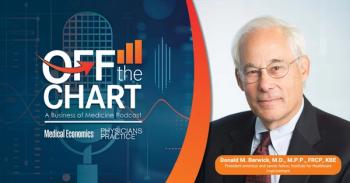
PAs Taking On a Leadership Role
PAs are overwhelmingly employed in clinical positions, yet there is also a great need for administrators with a PA-C credential.
I spend a lot of time doing "curb side" consults about physician-PA practice. As a PA who has been practicing in my state since 1982, I have a lot of experience and visibility in my community on just how physician-PA teams should practice optimally, and how to comply effectively with the myriad of regulations that govern physician-PA practice.
PAs like me have learned the system, and have a deep understanding of regulation and reimbursement issues effecting physician-PA teams. It is gratifying that local physicians look to PAs like me to help them streamline their physician-PA practice. However, I have always felt that it would be beneficial for a central clearinghouse of information about team practice that was available 24/7 to provide accurate information to medical teams.
To that end, the American Academy of Physician Assistants (AAPA) has begun a new major initiative to fill this void.
The
The AAPA's research and experience demonstrates that PA employers are looking for advice on how to improve utilization of PAs, create effective management systems, maximize reimbursement and fiscal efficiency, as well as develop programs, benefits and workforce models that help them retain topnotch PAs. This is an ongoing and critical problem at my health care facility.
Similarly, PA executives and aspiring PA leaders are seeking information, ideas, and strategies to support the evolving role of PAs in a changing healthcare environment.
The nearly 100,000 PAs practicing at all levels of the healthcare system in the United States are a critical resource and a viable solution to solving the human resource shortages plaguing the delivery of healthcare in America. Better utilizing this resource is in everyone's best interest.
According to new data from the National Commission on Certification of PAs, PAs are overwhelmingly employed in only one clinical position (83 percent). However, while the demand for clinical PAs increases, so does the need for administrators with a PA-C credential.
John McGinnity, MS, PA-C, AAPA president, shared his thoughts on leadership with the Academy last year. "Taking open positions on hospital committees or administrative and hiring roles can help elevate the ways PAs are seen by peers and executives and help influence how PAs are being hired and utilized," he wrote in PA Professional.
In addition to symposia and training for PAs, the CHLM will offer on-site advisory services, speakers, and partnership opportunities to forward-thinking PA employers and other organizations that support PAs.
I believe that AAPA is to be applauded for taking the initiative in this critical area. Two major events/symposia are planned for this year. The first will take place at AAPA Conference 2015 in San Francisco on May 24. This all-day CME symposium is designed for PAs and healthcare executives.
Sessions will include:
• The Health System Landscape - Critical Challenges Affecting PAs
• Leadership Character & Developing an Exceptional Team
• Making the Case: C-Suite Presentations
• Making the Case for Adding a PA to the Credentialing Committee
• PA Practice in Hospitals: Myths and Realities
• Strategies for Recruiting and Retaining PAs
• Maximizing Reimbursement
• Operationalizing Quality and Value
The second event, Healthcare Administration and Executive Leadership: A Conference for PAs, will take place at Wake Forrest School of Medicine Nov. 5-7, 2015. This two-day conference for PA administrators will provide leadership training and improve management and healthcare administration skills. Attendees will also come away with in-depth knowledge of the changing healthcare industry.
Preparing for the modern era of healthcare systems is critical, and the AAPA is to be applauded for taking a leadership role in this area. Centralizing information about the effective utilization of team medicine and providing consultative services to physician-PA teams can be expected to improve performance and patient outcomes at all levels.
Newsletter
Optimize your practice with the Physicians Practice newsletter, offering management pearls, leadership tips, and business strategies tailored for practice administrators and physicians of any specialty.








